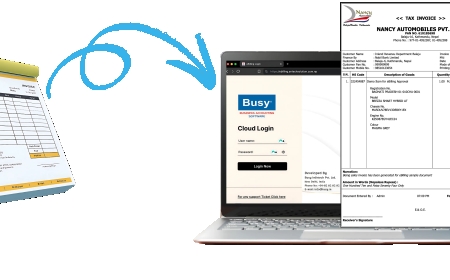What Is the New Rule for Student Visas in Australia? What You Need to Know in 2025
But new rules introduced in 2025 aim to preserve the integrity of the system while ensuring genuine students benefit.
International students have long viewed Australia as a top study destination. Renowned for its high-quality education, diverse campuses, and post?study opportunities, a student visa (Subclass 500) opens doors to a bright future. But new rules introduced in 2025 aim to preserve the integrity of the system while ensuring genuine students benefit.
Heres an in-depth look at the key changes, their implications, and how you can prepare.
1.Confirmation of Enrolment (CoE) Is Now Mandatory
Starting January 1, 2025, all student visa applicantsboth onshore and offshoremust include a Confirmation of Enrolment (CoE) at the time of application.
What This Means:
-
No more Letters of Offer. Applications without a CoE will be automatically invalid
-
For onshore applicants, if you dont hold a CoE before your current visa expires, your application is void and you won't receive a bridging visa
2.Work Rights Now Strictly 48 Hours per Fortnight
While student visa holders have historically been able to work part-time during study, from 2025 the limit is now 48 hours per fortnight during term time. (Thats about 24 hours per week.)
-
You can still work unlimited hours during scheduled breaks.
-
Employers need proof of your term datesyour CoE, for exampleto ensure compliance
3.Higher English Language Requirements
To maintain academic quality, IELTS and equivalent test score minimums have increased:
-
Student Visa (Subclass 500): now requires IELTS 6.0 overall (up from 5.5)
This ensures students are better prepared to succeed academically.
4.Financial CapacityMinimum Raised to AUD 29,710 per Year
New rules require applicants to prove they have sufficient funds to cover:
-
Living expenses (~AUD 29,710 per year)
-
Tuition fees
-
Return airfare
-
Additional amounts for any dependents
This increase reflects the goal of reducing financial stress on students and supporting their well-being.
5.Mandatory Offshore Applications for Student Visas
From mid-2025, applicants on visitor, graduate, or other temporary visas must apply from outside Australia
-
The practice of visa hoppingswitching to student status from other visashas been closed.
-
Makes the process more transparent and ensures genuine intent.
6.Priority Processing Linked to Providers Caps
Student visa processing now follows priority tiers based on how close a provider is to its government?set cap Priority 1 (fast?track): providers under 80% of their intake cap
-
Priority 2: slower processing once near quota
This de?facto cap is meant to balance student numbers across Australia
7.Increased Student Visa Fees
Application fees have risen significantly:
-
From AUD 710 to AUD 1,600 for a Subclass 500 visa
-
Additional administrative charges for dependents also apply
This aims to align with the actual cost of processing and managing international students.
8.Genuine Student Requirement Replaces GTE
The Genuine Temporary Entrant (GTE) test has been updated to a stricter Genuine Student requirement
-
Your reasons for studying must be clear and aligned with your background
-
You must demonstrate intent to return home after studies (unless eligible for post?study options)
9.Tighter Post?Study Work Pathways (Subclass 485)
While not directly student?visa rules, changes impact post?study plans:
-
Maximum period reduced for bachelor/master graduates
-
Age limit for Subclass 485 reduced from 50 to 35 years old
What These Changes Mean for You
? Apply Only with a CoE
Dont risk delaysget your CoE before lodging an application.
? Budget Carefully
Include higher fees, living costs, and dependents in your financial plan.
? Educate, Not Work
Your focus must align with your coursenot visa extension via work.
? Apply Offshore if Needed
If on a temporary visa, consider returning home to apply for your student visa.
? Be GenuineAlways
Ensure your application narrative is consistent, credible, and well-supported.
? Plan Post?Study Carefully
Consider age?limits and pathways before choosing degrees that rely on post-study work.
FAQs
Q: Can I apply onshore with a Visitor or Graduate Visa?
A: Only until mid-2025; afterward, you may need to apply from outside Australia
Q: What if I apply without a CoE?
A: Your application will be declared invalid, and you won't get a bridging visa .
Q: Can I work 48 hours per fortnight during breaks?
A: No48 is your maximum during term. But work can be unlimited in holidays .
Q: Will the new financial requirement stop me from applying?
A: You must provide proof of AUD?29,710+ yearly funds to qualify .
Q: Has the age limit changed for post-study visas?
A: Yes, Subclass 485 now caps at 35 years old, down from 50 .
Why Secure Help from a Migration Agent?
These changes are complex and evolving. A MARA-registered migration agent can help you by:
-
Ensuring you apply at the right time, with the right documentation
-
Preparing strong genuine-student statements
-
Advising on post-study pathways
-
Avoiding costly mistakes
Final Thoughts
Australias 2025 student visa reforms aim to protect genuine students and strengthen the education sector. While fees and requirements have increased, these updates also prioritise quality, fairness, and transparency.
If you're serious about studying in Australia, be meticulous: secure your CoE, plan your finances, and present a clear, genuine case for study. And most importantly, seek professional advice to navigate the new rules with confidence.

































